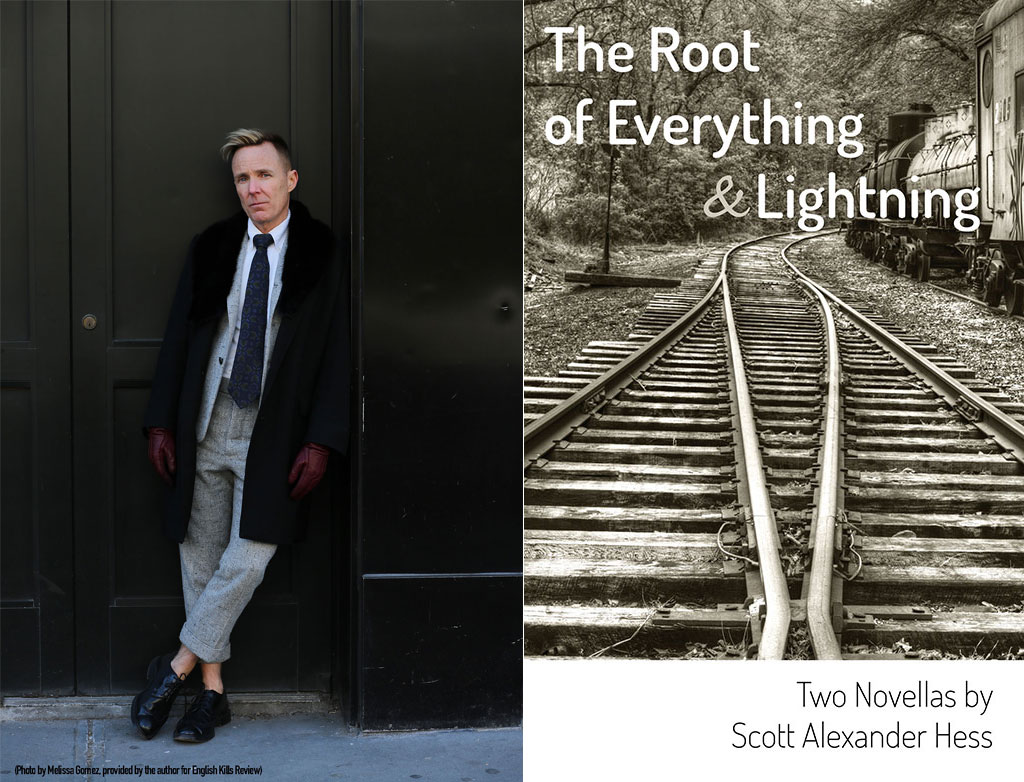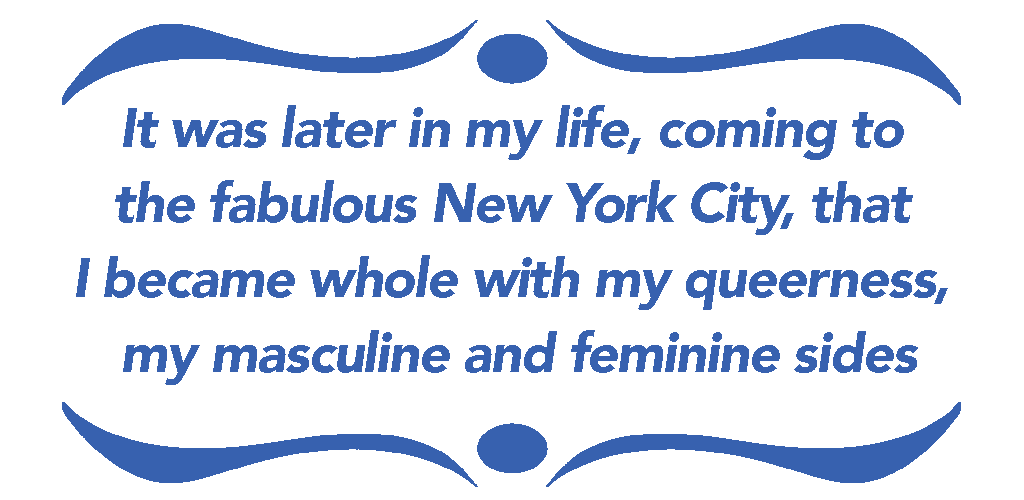
Scott Alexander Hess is as prolific as they come, a natural storyteller who’s always plotting new ways to transport his readers to different eras and locations. For his new pair of novellas, The Root of Everything & Lightning, published on Rebel Satori Press, Hess presents authentic literary historical fiction with riveting LGBT+ themes. I caught up with Scott to ask about his choices, process, and personal connections to the vivid worlds he creates within both novellas.
***
AMY DUPCAK for EKR: Your sentences drip with sensory details and natural imagery that fully bring the setting to life. In The Root of Everything specifically, Richard plants roots for his family in the natural landscape of Missouri. How does your personal connection to this place inform your writing? What are you trying to show or teach readers about it, like when Richard first arrives from Germany? And do you feel like you have to be there physically in order to craft such richly textured scenes?
SCOTT ALEXANDER HESS: I do believe visiting a place, immersing yourself in that place, is important to recreate it on the page. I know Missouri and its landscapes so my memory and sense memory serve me well. I am currently writing a new novel set in Delhi, India—I have been there twice—and it is proving difficult as it is such an amazing, chaotic, wonderful city. I think I need to go back again!
Missouri, in essence, is a stand in for me for the Midwest. While I grew up in St. Louis, we visited the rural areas, met farmers, spent time at the lake of the Ozarks. The people, the landscapes all of it, was so very different from me in both an emotional way and a physical way. I like exploring areas of the country that have great richness (the land, nature) and also great flaws (the prejudices, the perspectives).
DUPCAK: I’m also wondering about your connection to the characters you’ve created. Do any of them feel like alter-egos or like versions of yourself at different ages? Does young Bud in Lightning, for example, reflect your own upbringing or coming-of-age story in any way?
HESS: I wish I could say yes about Bud, but no— he is maybe that rough and tumble young man that I secretly envy (as I sip coffee and shop at Bergdorf Goodman). I do like to live vicariously through characters who may be very unlike me. Stanford in The Root of Everything is much closer to the person I am and the experiences I’ve had.
DUPCAK: Both The Root of Everything and Lightning explore themes of sexuality, masculinity, and father/son relationships. Is there a specific point you’re trying to make about what gets passed down through the paternal line, or about the expectations associated with masculinity in America and specifically the Midwest?

HESS: Absolutely. I was very much at sea growing up in Missouri. I was both frightened and enthralled by the masculinity and male bonding presented to me daily. I steered away from it completely (my friends were girls) yet I secretly desired that “type” of masculine profile. It was later in my life, coming to the fabulous New York City, that I became whole with my queerness, my masculine and feminine sides, my desires and the sense of fun and fluidity in gender and desire. Also, the time period greatly influences the role of importance of masculinity in my stories (1950 versus 1990).
DUPCAK: One character that really stands out to me is soothsaying Granny Emma in Root, whom Stanford dreams about as she speaks to him from beyond the grave. Bud also has a special relationship with his Gran, whose voice he sometimes hears as she guides and protects him post-death. How did these women take shape as you plotted the novellas, and what about the supernatural appeals to you as a writer?
HESS: I confess: I had a Granny in my life (Granny Bush) who greatly nurtured my creative freedom. I also have memories of my very unusual Granny Emma (absolutely the inspiration for the character in the book) and she always flitted around, and I never got to know her. I love the unknown, both emotionally in a character’s journey and in a bigger way as it relates to fate. I am drawn to always having one character in a book who may take a more mystical approach to life, fate and such.
DUPCAK: Finally, I want to acknowledge the long timeline of Root, which spans from 1904 to 1994, as opposed to the short timeline of Lightning, which takes place in the winter of 1918. How is writing across decades different than writing a story set over a few weeks? Does it impact your process or choice of point of view?
HESS: Oh yes! Bud’s story felt right in first person, in some parts due to the shorter length of his journey and the immediacy of what he faces and choices he must make, along with dealing with nature (a blizzard) and life and death. In Root, I was drawn to the multiple and overlapping journey of three generations, and additionally, I did not want it to be neat. I chose a non-linear narrative approach, which at times felt like putting together a tapestry but which was exciting and challenging and which very much suited the journey of the storytelling.
***
Author photo © Melissa Gomez, provided by the author
The Root of Everything & Lightning is available to order from Rebel Satori Press and from Bookshop.org.